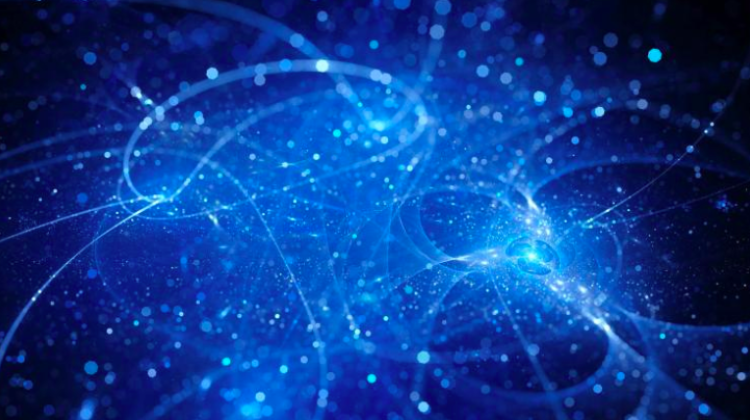Electrifying discovery concerning the formation of pairs in the microworld
 Photo: Fotolia
Photo: Fotolia
Electrostatic interactions can cause micro-objects in the liquid to start to form stable pairs, show theoretical analyses carried out at the Institute of Fundamental Technological Research PAS. If this new phenomenon can be confirmed in experiments, it may be useful, for example, in water purification or drug production.
Electrostatic interactions are the ones that cause static hair when taking off the hat. They also cause the horrible "kick" that we sometimes feel when touching a door handle after walking on a carpet. Not to mention discharges during thunderstorms... Electrostatics is our old friend that seems to have had no secrets for a long time. And yet there are some.
Theoretical analysis conducted by the team of Prof. Maria Ekiel-Jeżewska in the Laboratory of Complex Fluid Physics at the Institute of Fundamental Technological Research PAS showed that there could be configurations of micro-objects that are stably connected with each other not with chemical bonds, but by electrostatic forces. Provided it takes place in a liquid, and micro-objects fall under the influence of gravity.
This is surprising news! "I have been dealing with the physics of systems on a micro scale for many years, but until now I have not heard about the existence of micro-objects that would create such stable pairs" - says Prof. Maria Ekiel-Jeżewska.
The results of Prof. Ekiel-Jeżewska and her doctoral student, Chris Trombley, an American mathematician and physicist, appeared in the prestigious journal Physical Review Letters. This is theoretical research. Now it is time for experimenters to find such systems of micro-objects in experiments.
APPLICATIONS
"Objects with micrometer sizes include bacteria, algae, red blood cells" - says Prof. Maria Ekiel-Jeżewska. It turns out that in the liquid environment, other micro-objects can be selected for such gravity-dropping objects so that they will merge into pairs with electrostatic forces. And these pairs will function as if they were forming a new whole. When you try to pull one of the objects away from the other, it will spontaneously return to its place.
Who knows, maybe someday - once such stable pairs are observed in experiments - the forces of electrostatics can be used to produce new drug carriers. The new phenomenon described by the team from the Institute of Fundamental Technological Research PAS can also be useful in the development of new water purification methods. The results of these studies could turn out to be useful in the development of microfluidics, Lab-on-Chip systems, medical diagnostics or environmental protection, or have other applications that are impossible to be predicted today. The results may also be of interest to researchers working on experiments with bacteria or algae, the author says.
ELECTRIFYING DISCOVERY
Microparticles often have a greater density than the density of the liquid in which they are immersed. When exposed to gravity, they fall down (this phenomenon is called sedimentation). Scientists have wondered how introducing a charge to these particles will affect the sedimentation process. "Together with Chris Trombley, we showed that charged microparticles falling gravitationally in uncharged liquid can spontaneously change their positions to create pairs, in which the larger and less dense particle is above the smaller and denser one is below, at a precise distance" - describes Prof. Ekiel-Jeżewska.
This means that it is possible that objects with opposite charges - surrounded by liquid - will not "fall on each other" and there will be no flow of charges between them. Quite differently than in a vacuum, where charges can not form stationary systems, according to the theorem proved by the British mathematician Samuel Earnshaw in 1842.
"Liquid stabilises the configuration. Without it, these objects would become stuck together, but if there are, for example, uncharged water molecules between them and we add gravity, there is a balance between electrostatic attraction of microparticles and their repulsion caused by liquid and gravity. The system is stable "- the researcher says.
At first, physicists studied the interactions between pairs of oppositely charged identical particles. In this case, the equations did not show anything interesting. That is not surprising. If such a simple relationship existed, it would have been noticed long ago. But the results were different when researchers analysed the systems of oppositely charged particles of pairs differing in size and density. Scientists noticed a previously unknown phenomenon.
Scientists from the Institute of Fundamental Technological Research PAS are theoreticians. Now it is time for experiments. In their work, physicists suggest to the experimenters how to choose candidates for electrostatic partners.
PAP - Science in Poland, Ludwika Tomala
lt/ ekr/ kap/
tr. RL
Przed dodaniem komentarza prosimy o zapoznanie z Regulaminem forum serwisu Nauka w Polsce.














